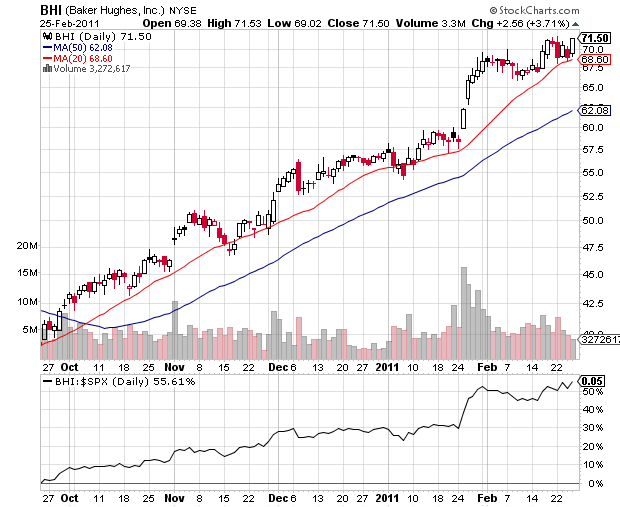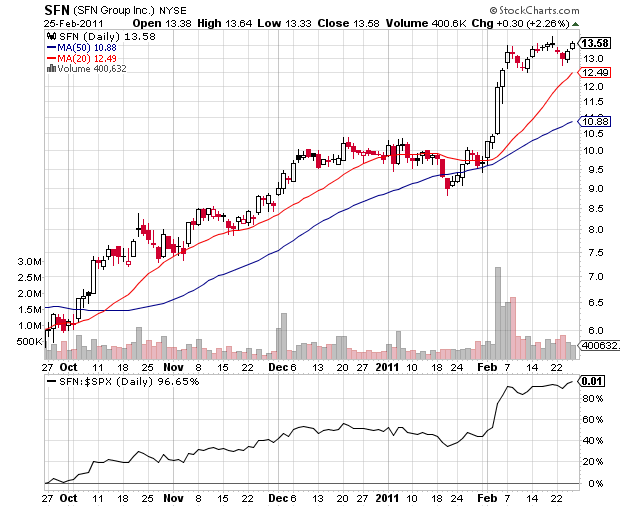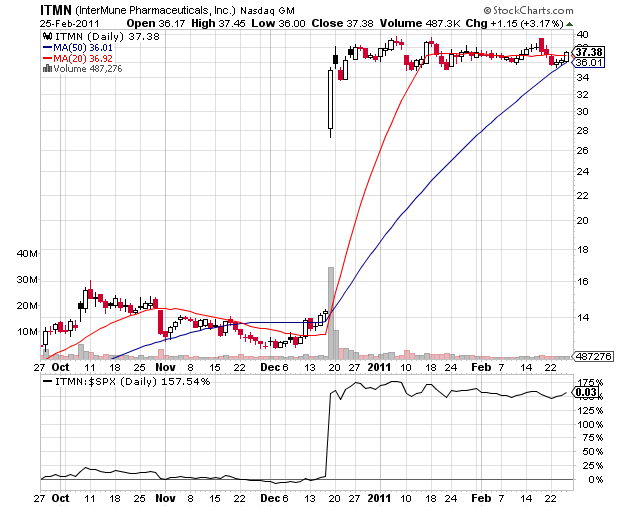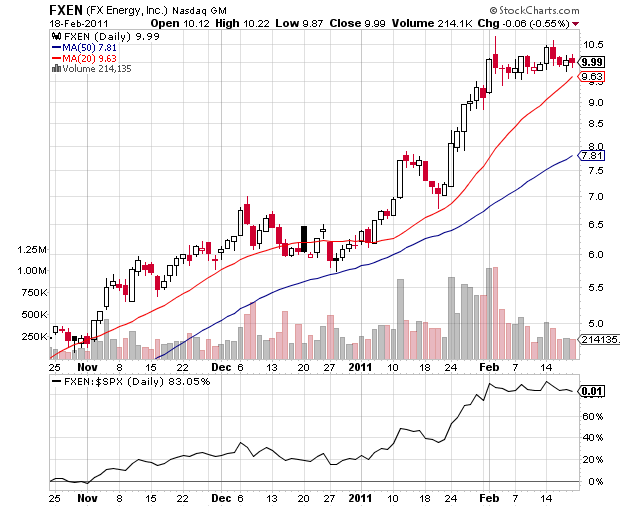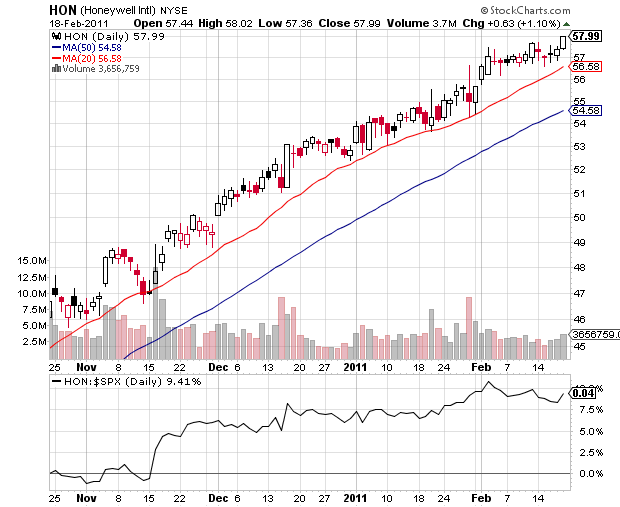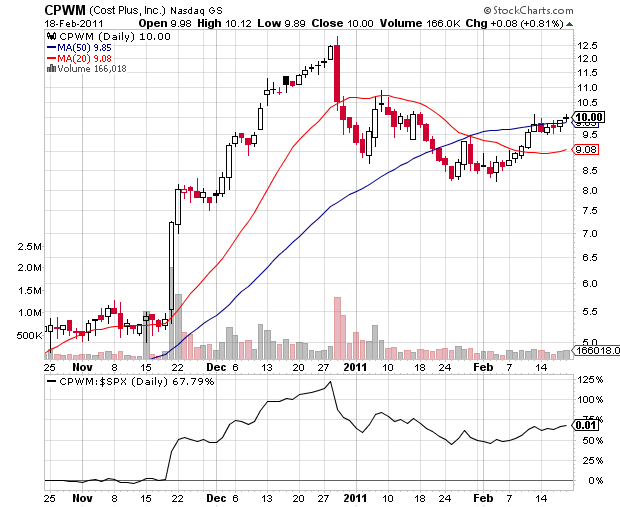Last week best performers’ list was dominated by oil related stocks. The front month crude oil futures appreciated by 14% due to an elevated political uncertainty in the oil rich North Africa and Middle East. In short to medium-term perspective, industry-wide move is the most powerful catalyst for the price appreciation of a stock, even bigger than an earnings surprise. The energy related stocks continue to be well represented in the latest edition of the St50.
A large number of the momentum semiconductor stocks managed to bounce from their rising 20-day moving averages. Let’s see if this was the beginning of a new base or just a temporary relief.
The Long-term care centers industry reached another new 52-week high last week. The stock with the highest 6 month RS in the group is $SRZ. Less than two years ago it traded at 30 cents due to fears that it wasn’t able to refinance its debt. On Friday, it traded above $10 per share.
In general, all you need to spot good swing setup ideas is to find stocks that had a noticeable leg up (usually one to 3 months), followed by a consolidation in the upper range of that leg. The consolidation could be anywhere from 2 days to a month. Then you need to isolate the stocks from the currently hot industries and focus primarily on them. If any of those stocks happen to be featured in either Stocktwits 50 or IBD 50, then you know that besides the price and industry momentum, your trading ideas have other strong catalysts behind. The latter is not critical, but it often helps as it is a testament that more market participants with various investing horizons are interested in the same stock. With other words, the stock is more predictable.
Last weekend I opened the topic about the difference between swing and position setups. I will go into more details later this week and share some entry and exit approaches for position setups, which assume longer holding periods.
Some of the best looking swing setups in the St50 this week are: $BHI $MRO $SFN $ITMN $AREX $ARBA $CAM $BRKS $ROK $FNSR
